Visiting Turin last summer, I had the opportunity to see the splendidly rebuilt Museo Egizio, now directed by Leiden’s old friend Dr Christian Greco. The contrast with the museum as I had seen it several years ago, with its still partially 19th century design, could not have been bigger. Turin houses one of the most beautiful Egyptian collections outside of Egypt, and the new museum is an ode to that. Making excellent use of the structure of the building, the museum offers four storeys brimming with art and antiquities from all periods of Egyptian history, including monolithic statues and an entire rock-cut temple chapel. There appears to be a new trend in museums to present the objects in the middle of a space rather than against the walls of a gallery, allowing the visitor to view the showcases from multiple sides. Spaciousness, targeted lighting and anti-reflective glass add greatly to the atmosphere and attention devoted to each work of art. Yet the objects are not taken as contextless units, but combined in assemblages and configured thematically in order to tell a story. The design of the Turin Museum is especially tasteful, organized and mildly playful.

Sarcophagus of Puia, 18th dynasty, Thebes
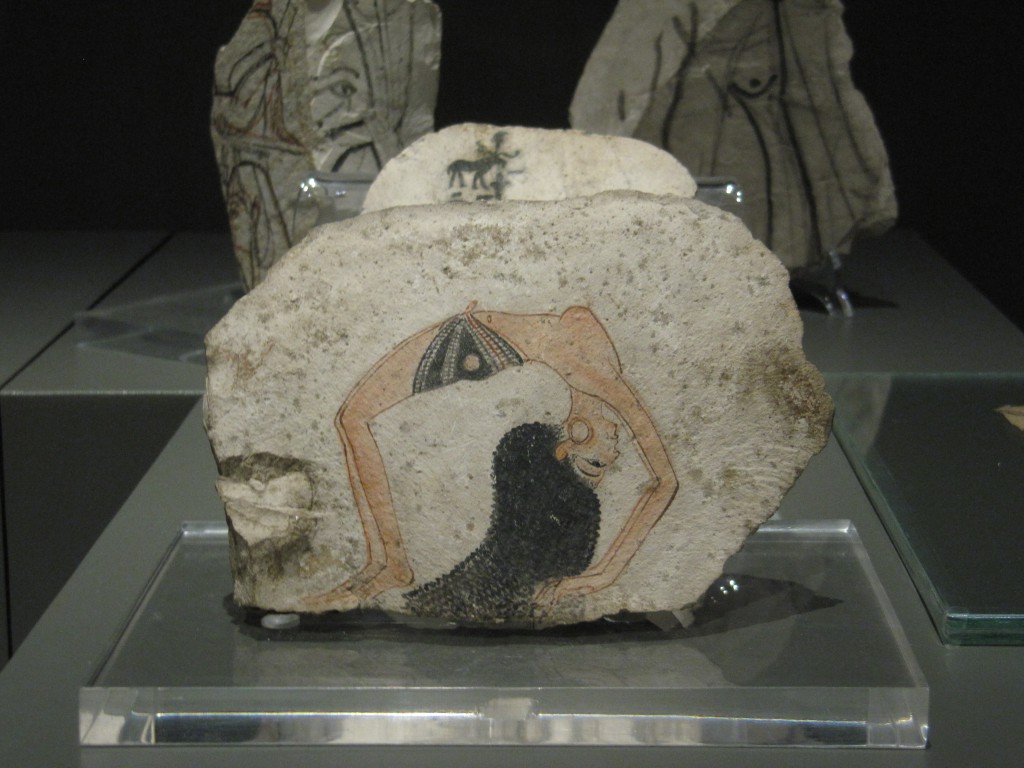
Ostracon of a dancer, 19th/20th dynasty, Deir el-Medina
The collection is rich in famous ostraca and papyri, but also contains an astonishing amount of color and wood. Whether this reflects the tastes of the early Italian collectors or the Mediterranean climate in which these materials could be relatively well preserved remains to be proved. But it surely has to do with the luck and wisdom of the early excavators, who focused on the daily life and death of non-royal persons rather than the robbed tombs of mighty pharaohs. The exquisite colors come to life through soft grey backgrounds and generally good lighting. What I personally liked very much was a 3D reconstruction of a Theban tomb that was shown next to the original, which focused on several decorative details in an augmented reality manner. Although the video went a tad too fast and the interactive element was missing, I’m always a fan of 3D reconstructions and deconstructions, especially when they add layers of information to the object itself.

Tomb chapel of Maja, New Kingdom, Deir el-Medina
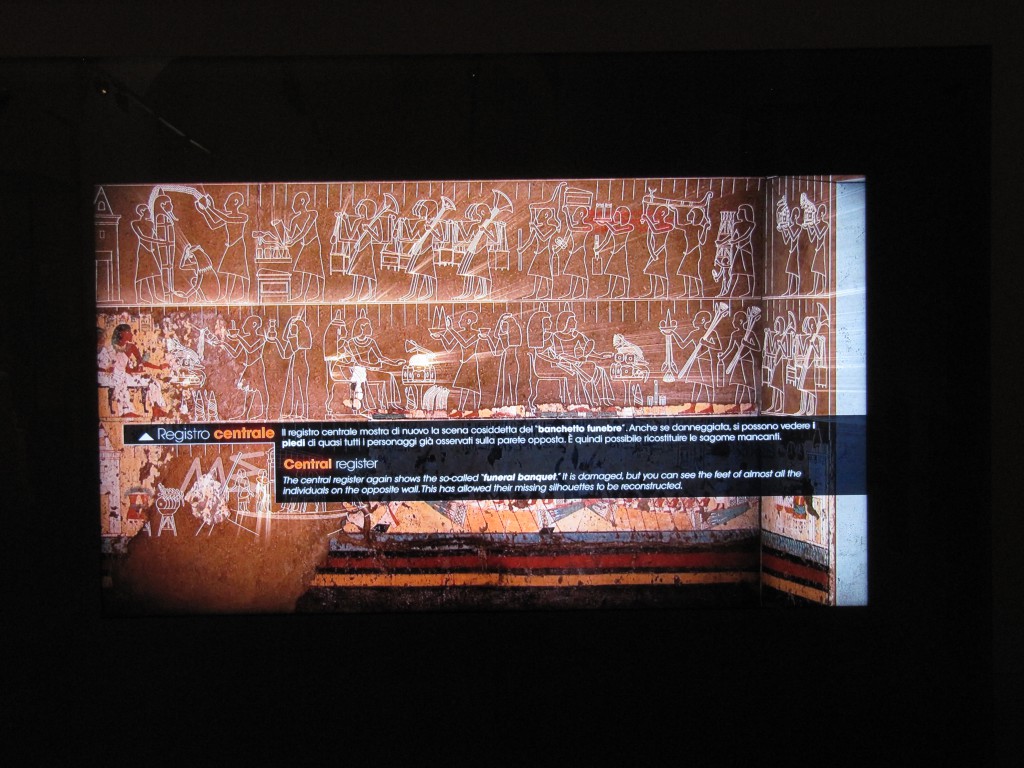
Video installation about the tomb chapel of Maja
I was happy to see that the excavators of much of this material were prominently displayed, and that archaeological context was well presented, for example through excavation photos accompanying the beautiful tomb equipment of Kha. This collection especially shows what a massive amount of material could potentially spring from one intact tomb. Other thematic rooms contained objects from Deir el-Medina, and a splendid collection of coffins. It is great to see papyri in their full length, or from both sides, and to be able to stand face to face with papyri and stelae at eye level.
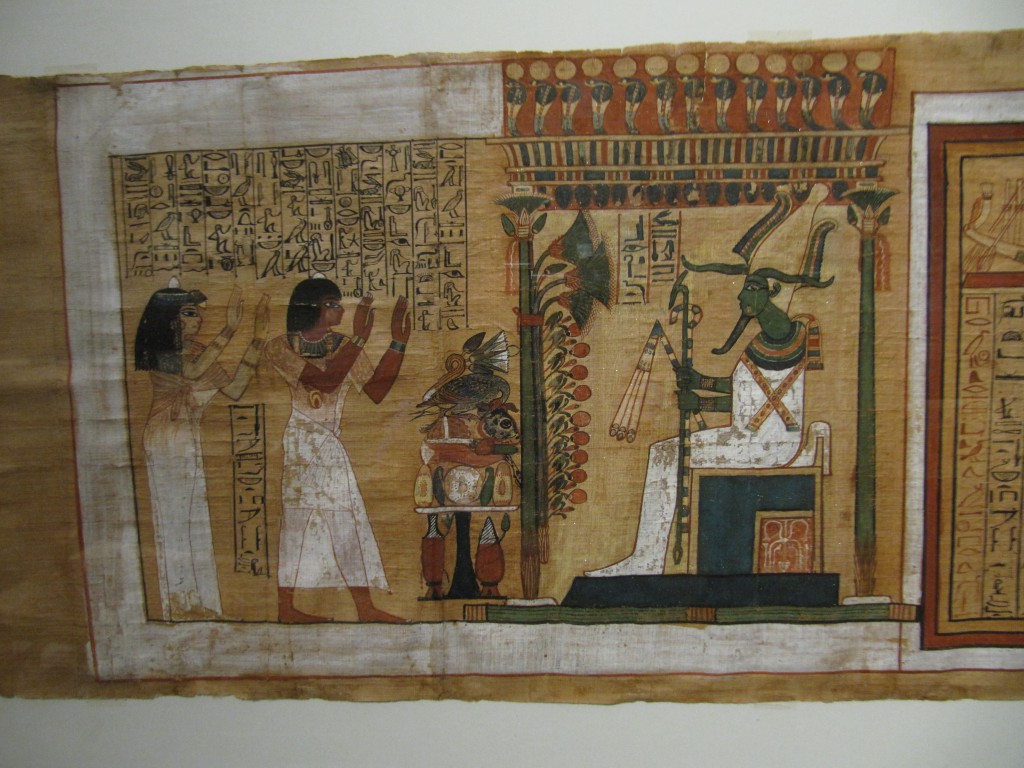
Book of the Dead of Kha
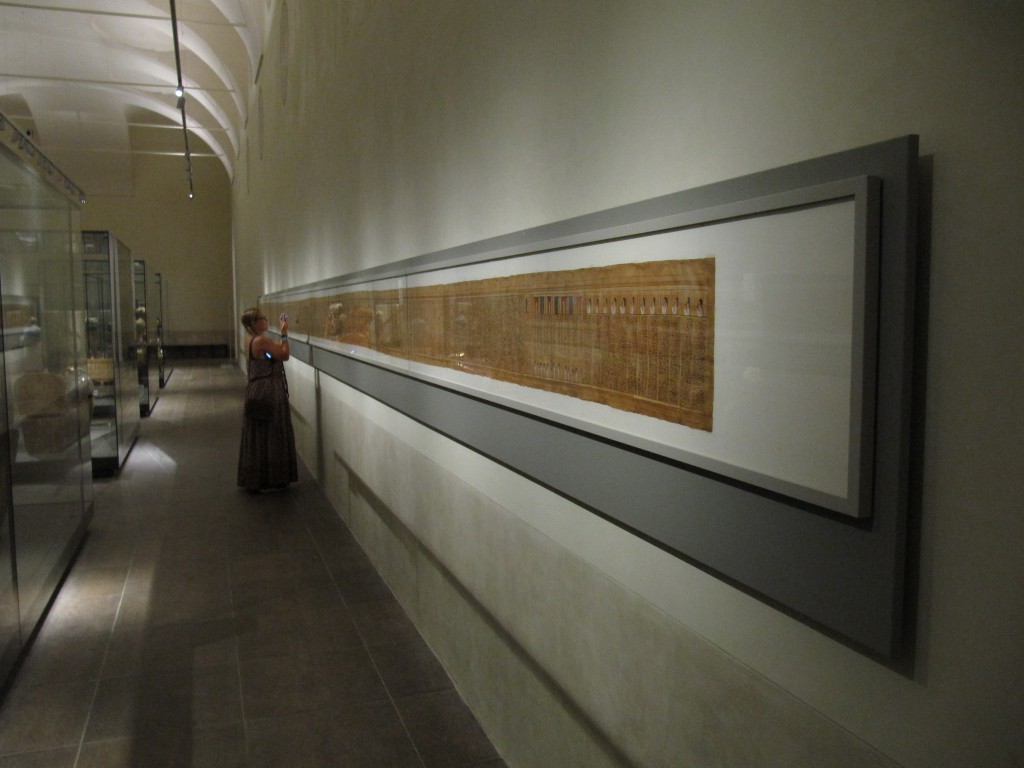
A full-length Book of the Dead papyrus
A video guide was provided, but I find it distracts from the museum’s physical content. Also, I couldn’t figure out how to disable the touch screen, so the thing just kept playing inside my backpack. The only downside to the whole experience was that it’s bloody cold inside the museum, but this seems common in Italy when it’s 30 degrees outside.
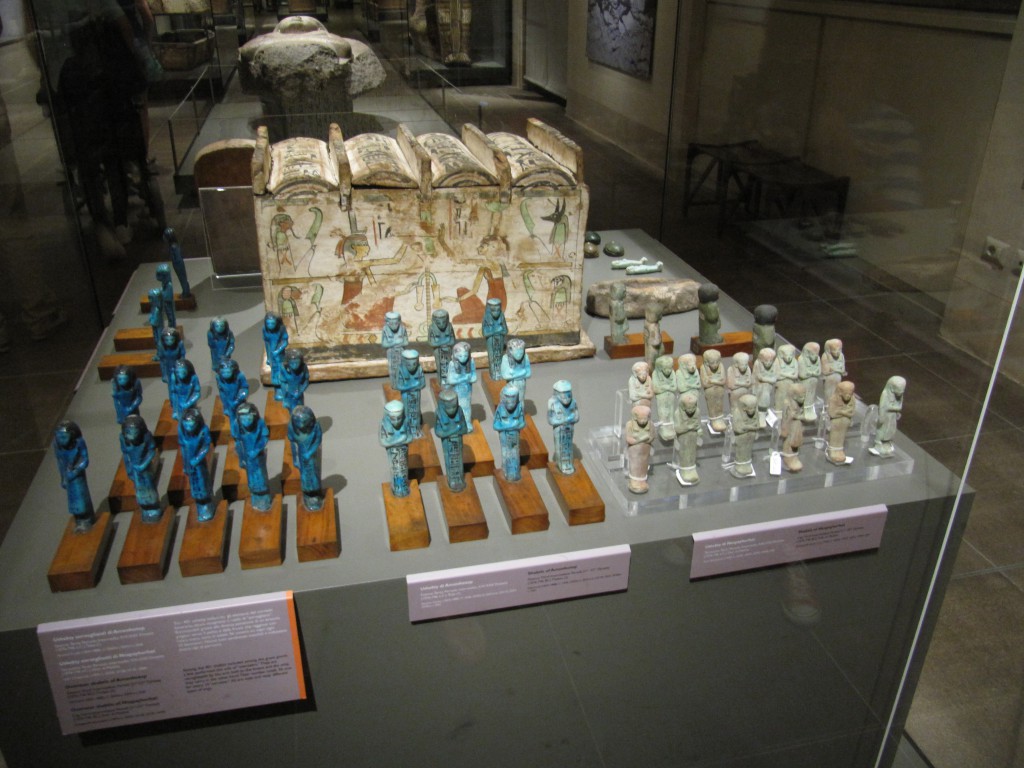
Shabtis and a wooden shabti box
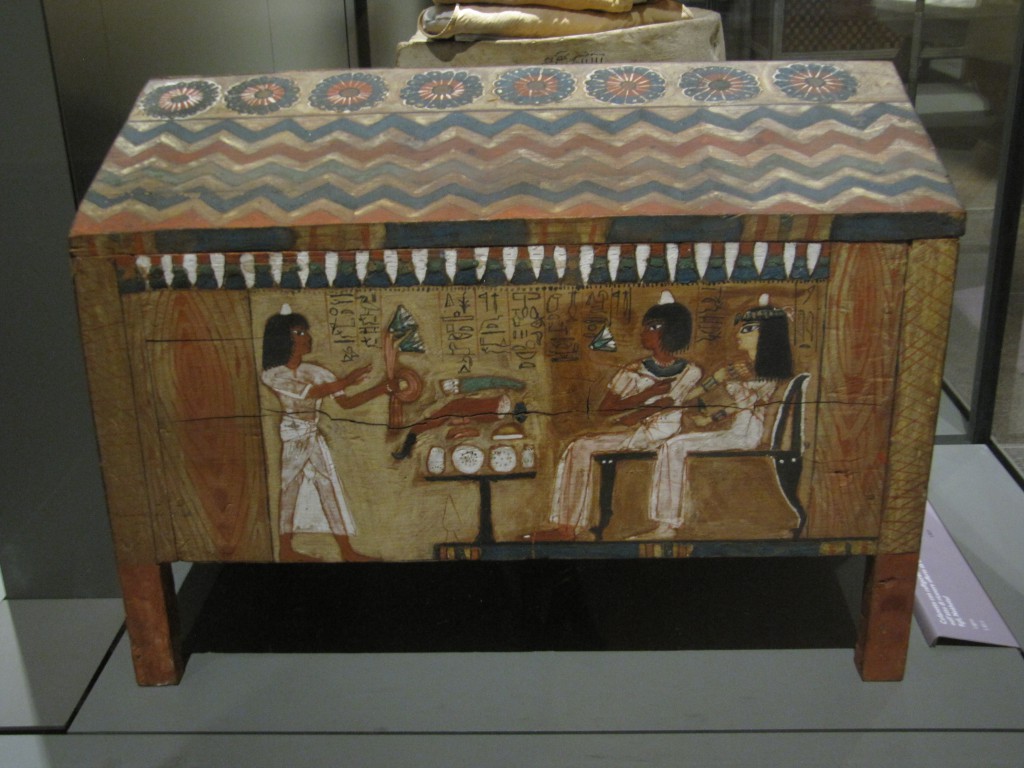
A wooden chest from the burial equipment of Kha
All in all the museum is aesthetically well designed, with much attention to the objects, and a treat for both Egyptologists and non-Egyptologists. The Gallery of Kings, with its colossal statues against a nauseating background of polished black mirrors, has been left intact, and is impressive regardless of its 80’s glam rock feel. The paper guide (at the time I visited only available in Italian, now also in English and other languages) likewise shows great taste in its size and design. If you haven’t yet: go visit this wonderfully renewed museum. And eat terribly good ice cream afterwards.
Also see my photostream for this visit
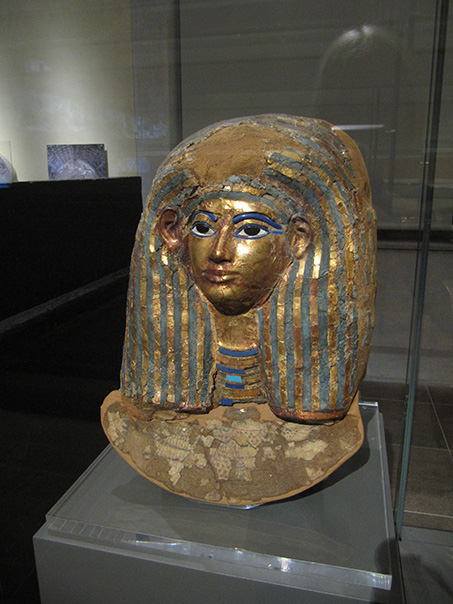
Funerary mask of Merit
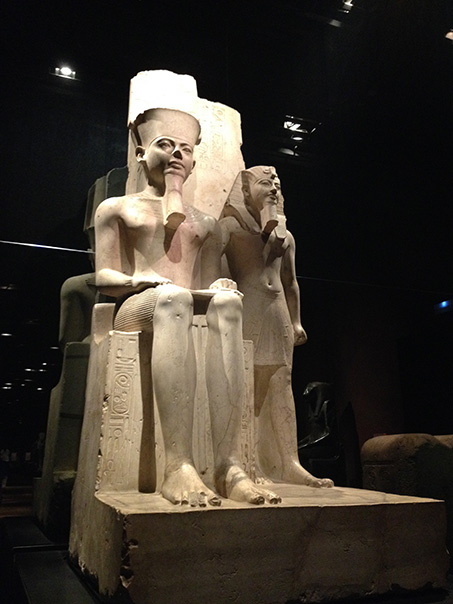
Colossal statue of Amun and Horemheb

Gorgeous museum. How do I contact Mr. Greco?